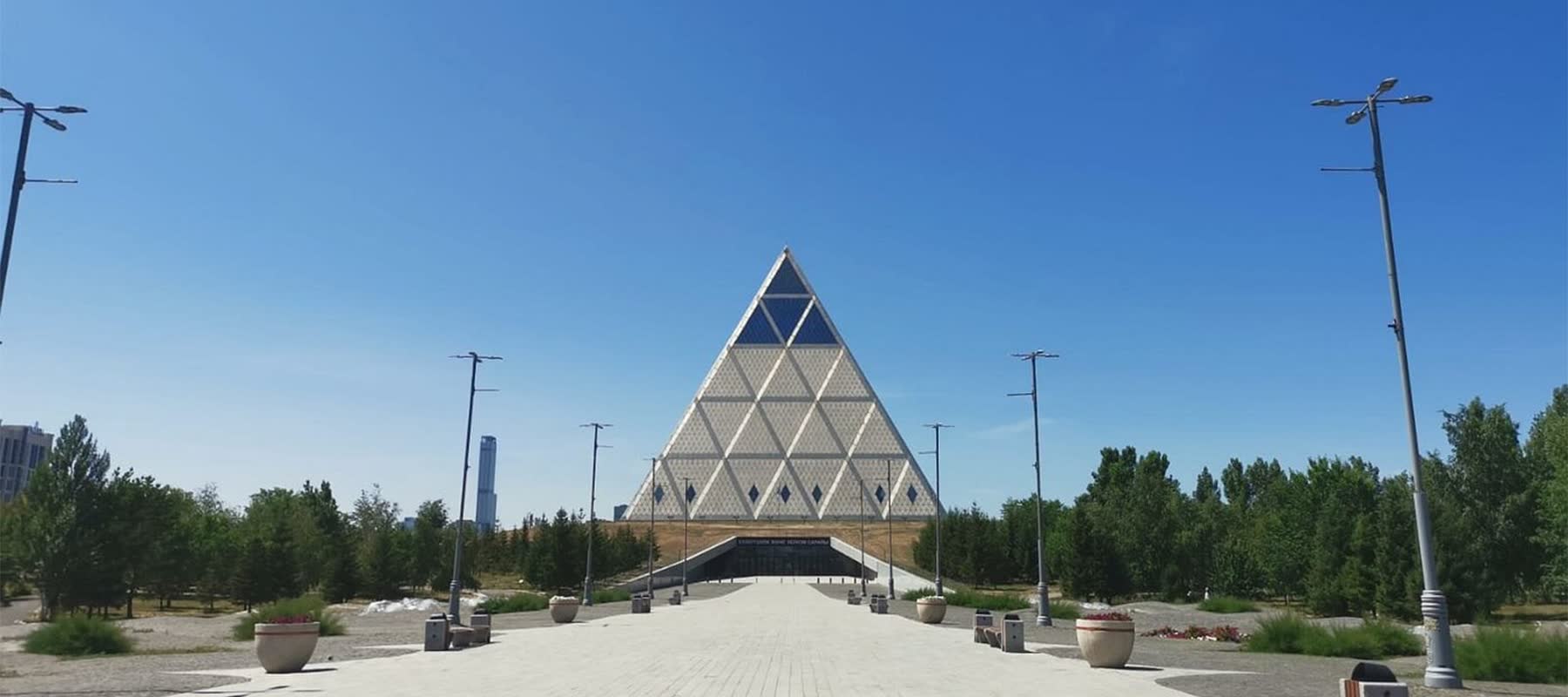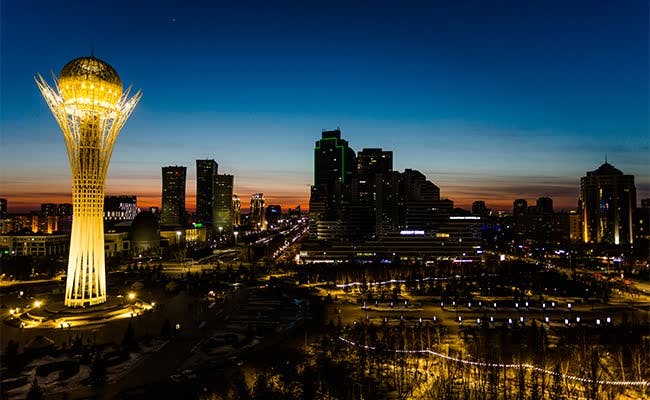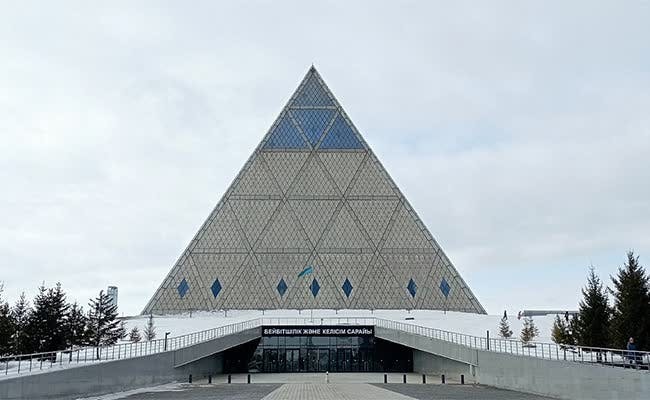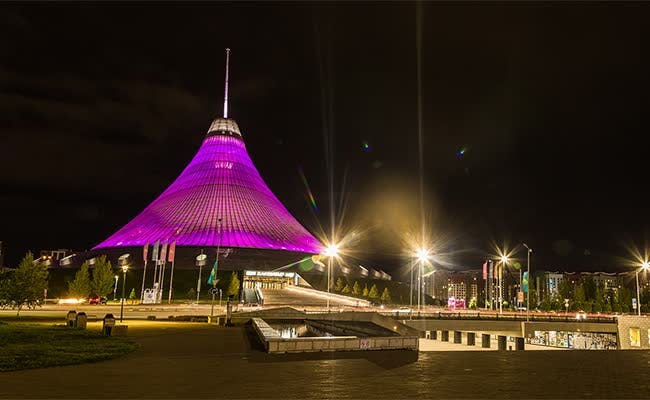The Palace of Peace and Reconciliation
The Palace of Peace and Reconciliation, also known as the Pyramid of Peace and Accord, is a distinctive architectural structure located in Astana, the capital city of Kazakhstan.
Here are some key details about the Palace of Peace and Reconciliation:

Architectural Design: The Palace of Peace and Reconciliation was designed by the renowned British architect Sir Norman Foster. It was inaugurated in 2006. The building is characterized by its unique pyramid shape, and it stands as a symbol of peace and understanding.
Purpose: The primary purpose of the Palace is to promote global peace and understanding among people of different cultures and religions. It serves as a venue for various conferences, meetings, and events focused on fostering dialogue and collaboration.
Location: The Palace is situated in the heart of Astana, near the Presidential Palace and other important government buildings.
Interior Spaces: The interior of the Palace includes several levels, and one of its notable features is the Opera Hall located at the apex of the pyramid. The hall is designed for cultural events and performances.
Pyramid Design Symbolism: The pyramid design of the building is often interpreted with symbolism. The triangle, with its three sides, is considered a symbol of unity and balance. The Palace is intended to be a space where people from different backgrounds can come together in harmony.
Stained Glass: The Palace features stunning stained glass windows that adorn its interior, adding to its aesthetic appeal. The windows contribute to the play of light within the structure.
World Religious Leaders Summit: The Palace of Peace and Reconciliation has hosted the Congress of Leaders of World and Traditional Religions, a significant event that brings together religious leaders from around the world to discuss matters of global importance.
The Palace of Peace and Reconciliation is not only an architectural landmark but also a symbol of Kazakhstan's commitment to promoting peace, understanding, and cooperation on an international level. Visitors to Astana often include the Palace in their itineraries to appreciate its unique design and the ideals it represents.
RELATED DESTINATIONS
Bayterek Tower is an iconic monument and observation tower that stands at the heart of Astana, symbolizing the aspirations and future of Kazakhstan. Completed in 2002, the tower was designed by the architect Norman Foster.
The Palace of Peace and Reconciliation, also known as the Pyramid of Peace and Accord, is a distinctive architectural structure located in Astana, the capital city of Kazakhstan. Here are some key details about the Palace of Peace and Reconciliation:
Khan Shatyr is a distinctive architectural structure located in Astana, the capital city of Kazakhstan. Here are some key details about Khan Shatyr:


